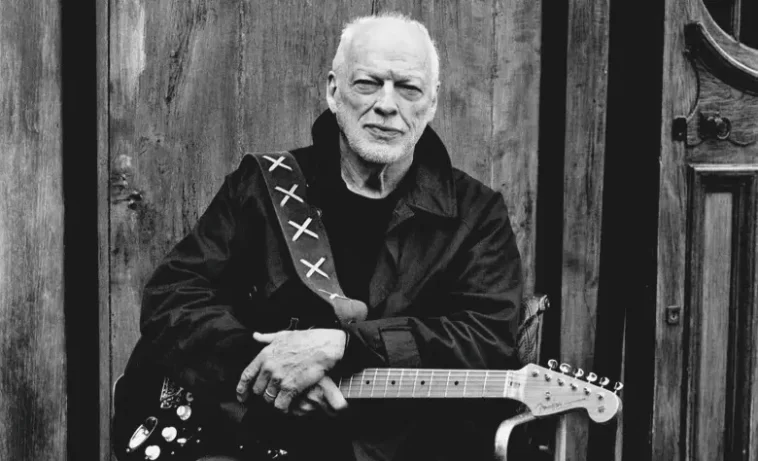Pink Floyd’s iconic guitarist and vocalist David Gilmour has always been admired for his unmistakable tone, soulful solos, and ability to blend emotion with technical brilliance. While many fans consider him one of the greatest guitarists of all time, Gilmour himself has often been quick to credit the artists who inspired and shaped his craft.
From his early beginnings with Syd Barrett and the transformation of Pink Floyd into one of the most important progressive rock bands of the 20th century, Gilmour’s playing was never created in a vacuum. His influences range from American blues pioneers to groundbreaking rock innovators, and their fingerprints can still be heard in his signature style.
In interviews over the years — including with Guitar Classics, Mojo, and The Guardian — Gilmour has highlighted eight musicians and bands who changed his life as a guitarist, singer, and songwriter. Together, they form a fascinating roadmap of how his artistry evolved from folk-blues roots to the stadium-filling soundscapes of The Dark Side of the Moon and Wish You Were Here.
The Eight Artists Who Changed David Gilmour’s Life
1. The Beach Boys
For Gilmour, harmony was the foundation of his early musical experiments. He formed his first band with friends who wanted to replicate the lush vocal arrangements of The Beach Boys. Their leader Brian Wilson became one of his lifelong inspirations. Gilmour even inducted Wilson into the UK Music Hall of Fame in 2006, remarking that songs like In My Room and Don’t Worry Baby showed how Wilson was painting with a far more colorful palette than most surf rock acts of the era.
2. The Beatles
Like nearly every British musician of the 1960s, Gilmour was deeply influenced by The Beatles. Their psychedelic innovations, particularly in their later years, inspired Pink Floyd’s own sonic experiments. Gilmour once admitted: “They taught me how to play guitar; I learnt everything — the bass parts, the lead, the rhythm, everything.” His admiration for John Lennon’s Dylan-influenced songwriting further highlights how deeply The Beatles shaped his approach.
3. Hank Marvin
The Shadows’ lead guitarist, Hank Marvin, became Britain’s first true guitar hero. His clean melodic phrasing on a red Fender Stratocaster left a lasting impact on a young Gilmour. He recalled in interviews that Marvin’s ability to make melodies stand out with “beef” became a model for his own expressive guitar voice.
4. Jimi Hendrix
Seeing Hendrix live in a small London club in 1966 was, according to Gilmour, a life-changing moment. He remembered jaws dropping as Hendrix flipped convention — literally, by playing the guitar upside down — and produced sounds no one had ever heard. Songs like The Wind Cries Mary became personal favorites, cementing Hendrix as one of Gilmour’s most enduring influences.
5. Eric Clapton
As a blues purist and innovator, Eric Clapton was essential to Gilmour’s development. He studied Clapton’s work with John Mayall & The Bluesbreakers and Cream, painstakingly learning licks before finding his own style. Gilmour has often advised young players to do the same — copy their heroes until their own voice naturally emerges.
6. B.B. King
When it comes to emotional phrasing, few guitarists are as instantly recognizable as B.B. King. Gilmour admired his ability to say more with a single note than many could with dozens. The two would later meet and even perform together, with Gilmour praising King’s charisma both on and off the stage.
7. Bob Dylan
As a songwriter, Gilmour credits Bob Dylan for showing him the power of words combined with music. He admired both Dylan’s acoustic protest era and his controversial electric transition, insisting he loved both sides of Dylan’s artistry. For Gilmour, Dylan’s songs were “like arrows,” piercing through crowds with their urgency.
8. Lead Belly
Long before Pink Floyd filled stadiums, Gilmour was captivated by the raw folk-blues of Lead Belly. His 12-string guitar playing and storytelling left a huge impression on the young guitarist. Gilmour fondly recalled learning Rock Island Line as a child, a song that could be played with just one chord — a simplicity that captured the essence of folk tradition.
Legacy of Influence
These eight artists, from blues pioneers to rock visionaries, form the bedrock of David Gilmour’s career. What makes his story unique is how he absorbed their lessons without merely imitating them. Instead, Gilmour blended their influences into a style that is instantly recognizable — emotional bends, spacious phrasing, and an ability to make the guitar sing.
Today, Gilmour’s work with Pink Floyd remains a masterclass in turning personal inspiration into universal music. From Comfortably Numb’s soaring solos to the haunting beauty of Shine On You Crazy Diamond, the fingerprints of his heroes are there — but always filtered through his own creative voice.

